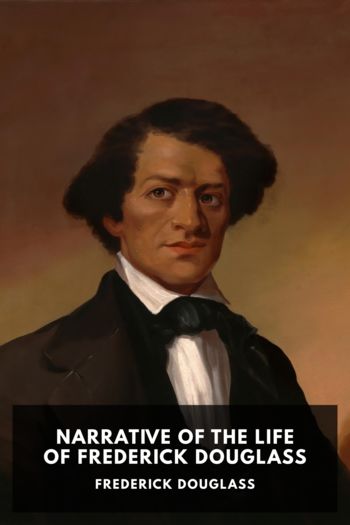The Autobiography of Ma-Ka-Tai-Me-She-Kia-Kiak, or Black Hawk, Black Hawk [short books for teens txt] 📗

- Author: Black Hawk
Book online «The Autobiography of Ma-Ka-Tai-Me-She-Kia-Kiak, or Black Hawk, Black Hawk [short books for teens txt] 📗». Author Black Hawk
The Annals of Iowa of 1863 and 1864 state that the old chief was buried by laying his body on a board, his feet fifteen inches below the surface of the ground, and his head raised three feet above the ground. He was dressed in a military uniform, said to have been presented to him by a member of General Jackson’s cabinet, with a cap on his head ornamented with feathers. On his left side was a sword presented him by General Jackson; on his right side a cane presented to him by Henry Clay, and one given to him by a British officer, and other trophies. Three medals hung about his neck from President Jackson, ex-President John Quincy Adams and the city of Boston, respectively. The body was covered with boards on each side, the length of the body, which formed a ridge, with an open space below; the gables being closed by boards, and the whole was covered with sod. At the head was a flagstaff thirty-five feet high which bore an American flag worn out by exposure, and near by was the usual hewn post inscribed with Indian characters representing his warlike exploits, etc. Enclosing all was a strong circular picket fence twelve feet high. His body remained here until July, 1839, when it was carried off by a certain Dr. Turner, then living at Lexington, Van Buren county, Iowa. Captain Horn says the bones were carried to Alton, Ills., to be mounted with wire. Mr. Barrows says they were taken to Warsaw, Ills. Black Hawk’s sons, when they heard of this desecration of their father’s grave, were very indignant, and complained of it to Governor Lucas of Iowa Territory, and his excellency caused the bones to be brought back to Burlington in the fall of 1839, or the spring of 1840. When the sons came to take possession of them, finding them safely stored “in a good dry place” they left them there. The bones were subsequently placed in the collection of the Burlington Geological and Historical Society, and it is certain that they perished in the fire which destroyed the building and all the society’s collections in 1855; though the editor of the Annals, (April, 1865, p. 478) says there is good reason to believe that the bones were not destroyed by the fire, and he is “creditably informed that they are now at the residence of a former officer of said society and thus escaped that catastrophe.”
Another account, however, and probably a more reliable one, states that the last remains of Black Hawk were consumed as stated, in the burning building containing the collections and properties of the Burlington Geological and Historical Society.
In closing this narrative of the life of this noble old chief it may be but just to speak briefly of his personal traits. He was an Indian, and from that standpoint we must judge him. The makeup of his character comprised those elements in a marked degree which constitutes a noble nature. In all the social relations of life he was kind and affable. In his house he was the affectionate husband and father. He was free from the many vices that others of his race had contracted from their associations with the white people, never using intoxicating beverages to excess. As a warrior he knew no fear, and on the field of battle his feats of personal prowess stamped him as the “bravest of the brave.”
But it was rather as a speaker and counsellor that he was distinguished. His patriotism, his love of his country, his home, his lands and the rights of his people to their wide domain, moved his great soul to take up arms to protect the rights of his people. Revenge and conquest formed no part of his purpose. Right was all that he demanded, and for that he waged the unequal contests with the whites. With his tribe he had great personal influence and his young men received his counsel and advice, and yielded ready acquiescence in his admonitions. With other tribes he was held in high esteem, as well as by English and American soldiers, who had witnessed his prowess on the field of battle.
The Black Hawk TowerThis favorite resort of Black Hawk, situated on the highest bank of Rock river, had been selected by his father as a lookout, at the first building up of their village. From this point they had an unobstructed view up and down Rock river for many miles, and across the prairies as far as the vision could penetrate, and since that country has been settled by the whites, for more than half a century, has been the admiration of many thousands of people.
The village of Black Hawk, including this grand “look out,” was purchased from the Government by Col. George Davenport, at Black Hawk’s particular request, for the reason,





Comments (0)